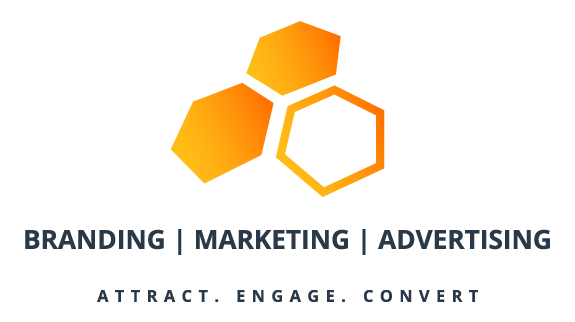A strong online presence is no longer a luxury; it’s a necessity. With billions of people connected to the internet, digital marketing has become a powerful tool for businesses of all sizes. However, most are only looking to be dominate with a few hundred thousand potential customers in their area.
By understanding and leveraging the key components of digital marketing, you can effectively reach your target audience, drive traffic to your website, and boost your bottom line.
I have been doing digital marketing for 25 years. I am a resource to other digital marketing CEOs. I firmly believe digital marketing needs to be elevated because there is a lost art of connecting with the customer that needs to be addressed.
If you feel disconnected or frustrated with your past digital marketing experiences, let’s connect. I am here to help!

Part 1: What Digital Marketing Is (and Isn't)
Digital marketing is a broad term that encompasses all marketing efforts that utilize digital channels to reach consumers. It’s the practice of promoting products and services through digital technologies. Unlike traditional marketing methods, digital marketing allows businesses to connect with their target audience in a more personalized and measurable way.
What Digital Marketing Isn’t:
- A One-Time Fix: Digital marketing is an ongoing process that requires consistent effort and adaptation.
- A Magic Bullet: While digital marketing can be incredibly effective, it’s not a guaranteed overnight success.
- A Set-It-and-Forget-It Strategy: To achieve optimal results, digital marketing campaigns need to be monitored, analyzed, and optimized regularly.
Key Components of Digital Marketing:
- Search Engine Optimization (SEO): Improving your website’s visibility in search engine results.
- Pay-Per-Click (PPC) Advertising: Running targeted ads on search engines and social media platforms.
- Content Marketing: Creating high-quality content to attract and engage your target audience.
- Social Media Marketing: Leveraging social media platforms to build brand awareness and connect with customers.
- Email Marketing: Sending targeted emails to nurture leads and drive sales.
- Website Development and Design: Creating a user-friendly website that is optimized for search engines and conversions.
By effectively utilizing these strategies, businesses can reach a wider audience, generate more leads, and increase sales.
In the next part, we’ll dig deeper into how to effectively implement these strategies.
Part 2: How to Effectively Do Digital Marketing
Now that we understand the basics of digital marketing, let’s dive into how to effectively implement these strategies.
1. Search Engine Optimization (SEO)
SEO is the process of optimizing your website to rank higher in search engine results. This involves:
- Keyword Research: Identifying relevant keywords and phrases that your target audience is searching for.
- On-Page SEO: Optimizing your website’s content, structure, and HTML tags.
- Off-Page SEO: Building high-quality backlinks to your website.
- Technical SEO: Ensuring your website is technically sound and easy to crawl by search engine bots.
2. Pay-Per-Click (PPC) Advertising
PPC advertising allows you to quickly reach your target audience through targeted ads on search engines and social media platforms.
- Google Ads: Create effective Google Ads campaigns to reach potential customers searching for your products or services.
- Social Media Advertising: Use platforms like Facebook, Instagram, and LinkedIn to target specific demographics and interests.
- Remarketing: Retarget users who have previously visited your website to increase conversions.
3. Content Marketing
Content marketing involves creating and sharing valuable content to attract and engage your target audience.
- Blogging: Regularly publish high-quality blog posts to improve your website’s SEO and attract organic traffic.
- Video Marketing: Create engaging videos to explain complex concepts, showcase products, or tell your brand story.
- Social Media Content: Share relevant and interesting content on social media platforms to build a strong online presence.
- Email Marketing: Build and nurture your email list to send targeted marketing messages.
4. Social Media Marketing
Social media platforms offer a powerful way to connect with your audience and build brand awareness.
- Platform Selection: Choose the platforms that are most relevant to your target audience.
- Content Strategy: Create engaging content that resonates with your audience.
- Community Building: Foster a sense of community by responding to comments and messages.
- Paid Social Advertising: Use paid advertising to reach a wider audience and drive conversions.
5. Email Marketing
Email marketing is a cost-effective way to build relationships with your audience and drive sales.
- Email List Building: Grow your email list through opt-in forms, contests, and other strategies.
- Personalized Email Campaigns: Tailor your email content to the interests and preferences of your subscribers.
- Automation: Use automation tools to send timely and relevant emails.
- Email Analytics: Track your email campaigns’ performance and optimize your strategy.
Implementing these digital marketing strategies, you can attract new customers, build brand loyalty, and drive business growth.
Part 3: Why Digital Marketing Matters
A strong online presence is crucial for success. Digital marketing offers numerous benefits for businesses of all sizes:
Increased Brand Visibility:
- Search Engine Optimization (SEO): Improve your website’s visibility in search engine results to attract organic traffic.
- Social Media Marketing: Leverage social media platforms to reach a wider audience and build brand awareness.
- Pay-Per-Click (PPC) Advertising: Use targeted ads to quickly reach your target audience.
Enhanced Customer Engagement:
- Content Marketing: Create valuable content to attract and retain customers.
- Email Marketing: Build strong relationships with your audience through personalized email campaigns.
- Social Media Listening: Monitor social media conversations to identify potential customers and address their concerns.
Measurable Results:
- Track Key Performance Indicators (KPIs): Measure the effectiveness of your campaigns.
- Optimize Your Strategy: Use data-driven insights to improve your marketing efforts.
- Calculate ROI: Determine the return on your investment in digital marketing.
Cost-Effective:
- Targeted Marketing: Reach your ideal audience without wasting resources.
- Flexible Budgeting: Adjust your budget based on your specific needs and goals.
- Long-Term Benefits: Build a strong online presence that can generate leads and sales for years to come.
By investing in digital marketing, businesses can:
- Generate Leads: Attract potential customers and convert them into leads.
- Increase Sales: Drive revenue and boost your bottom line.
- Build Brand Loyalty: Foster strong relationships with your customers.
- Stay Ahead of the Competition: Adapt to the ever-evolving digital landscape.
In conclusion, digital marketing is a powerful tool that can help businesses of all sizes achieve their goals. By understanding the key components and implementing effective strategies, you can unlock the full potential of digital marketing and drive your business to success.

